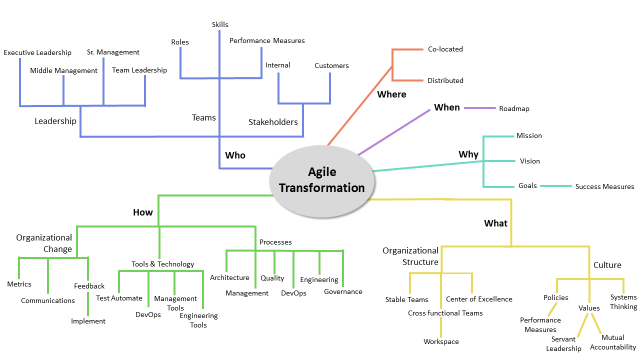
Many people ask, what is the distinction between an Agile adoption and an Agile transformation? The former being the adoption of an Agile method and tools, and the latter encompassing those plus the people, culture and mindset shift that must accompany the adoption for an organization to fully realize the benefit.
The real difference between adoption and transformation is that adoption fails and transformation sticks. You don’t really choose one over the other – people that fail to see the difference often do the adoption because they don’t realize that culture is what makes it really stick. Most organizations start with the adoption of a method at the team level within IT. Some will also covey the message to ‘do Agile’ from the top. However, this type of adoption rarely sticks. Middle management is lost in the shuffle, often just waiting out the change and expecting it to fail. The focus is on processes and tools – not people and interactions. The mindset of transparency, adaption and continuous improvement is misplaced in favor of mechanics and metrics.
A true transformation requires the organization to think and ‘be Agile’. It requires the organization to look at their people, organization, and culture, as well as their process and tools. An organization will move through stages improving and absorbing changes in these areas. Typically, an organization will begin with a pilot with one or more teams. This allows the organization to best see how Agile will affect the current process and roles, and help to uncover gaps and potential areas of conflict, such as, central versus decentralized control.
It takes time to move through all the stages that are mapped out for the process, and much depends on the attitude and behaviors of leadership. Does leadership model the behavior they seek in others? Do they look to break down barriers to value delivery? Do they reward the team and system success rather than individual or functional success? Another important factor is that the organization knows what it is driving towards. This vision and accompanying goals are what will drive the pilot and future transformation activities. This alignment is the first step. As CC Pace continues to work with companies through this process we see the positive effects gained throughout each organization.
If you are interested in learning more about Agile Transformations, contact us today!

More from the blog
View All Blog PostsSubscribe to Our Blog
Fill out your email address to receive notifications about new blog posts from CC Pace!
